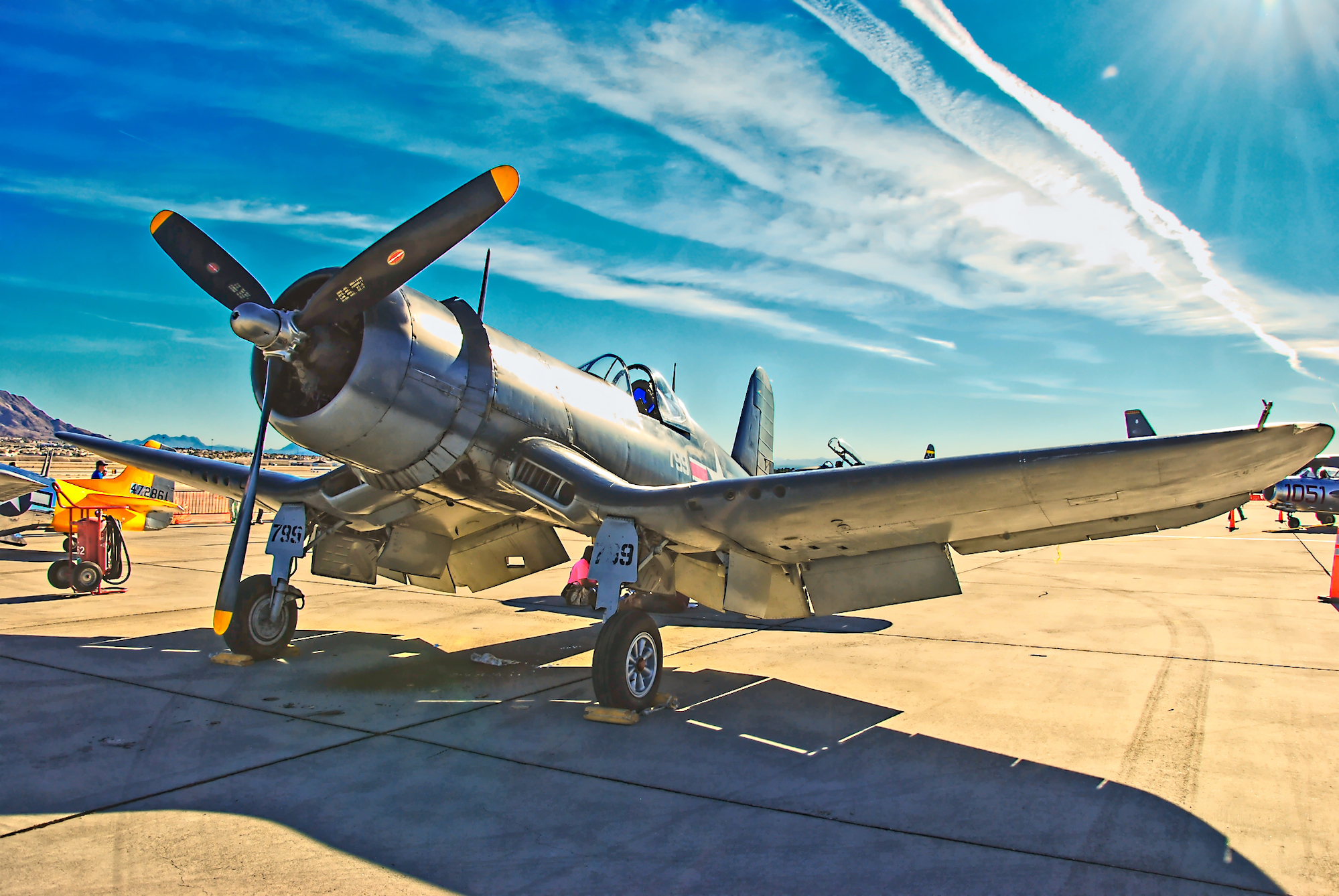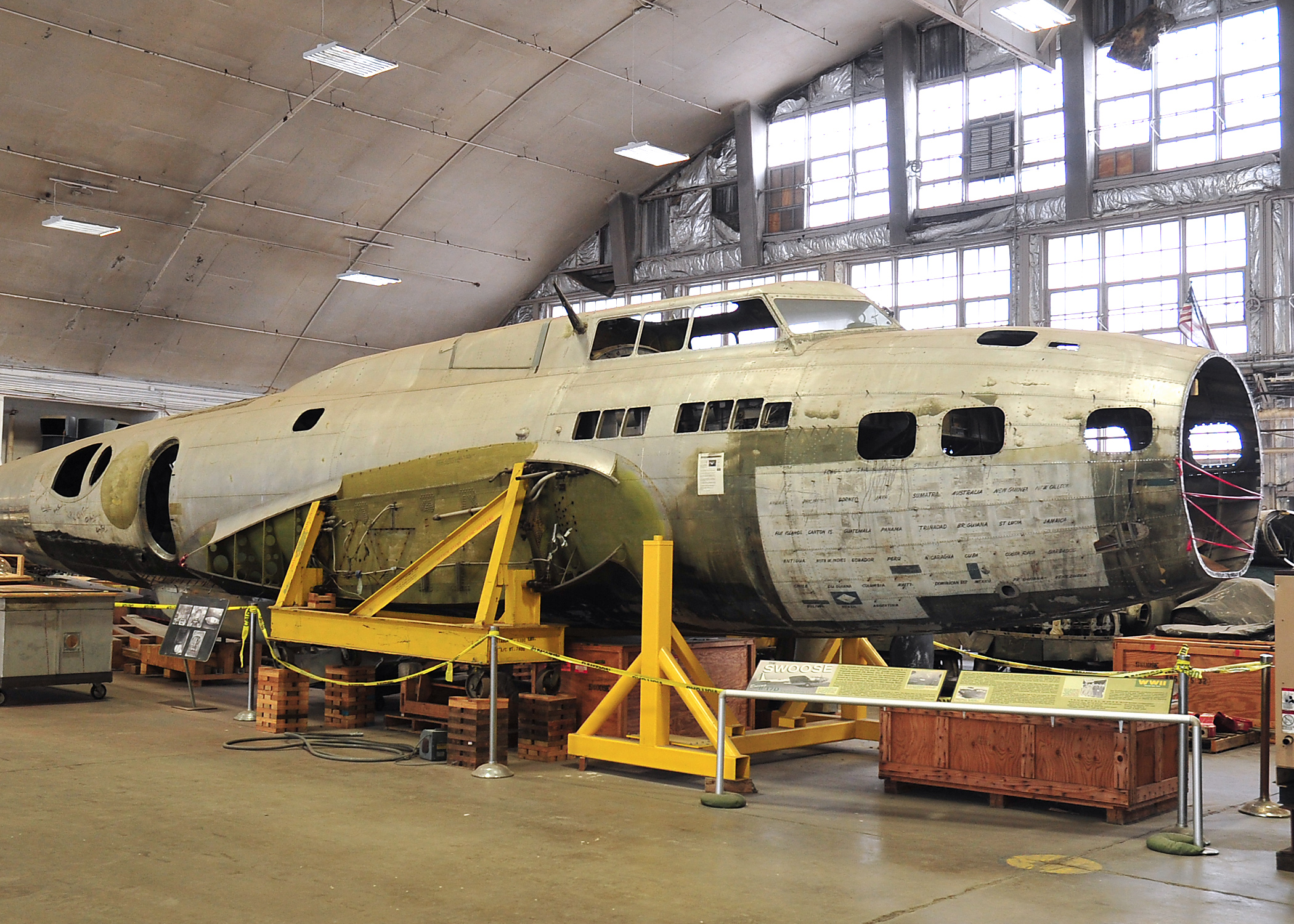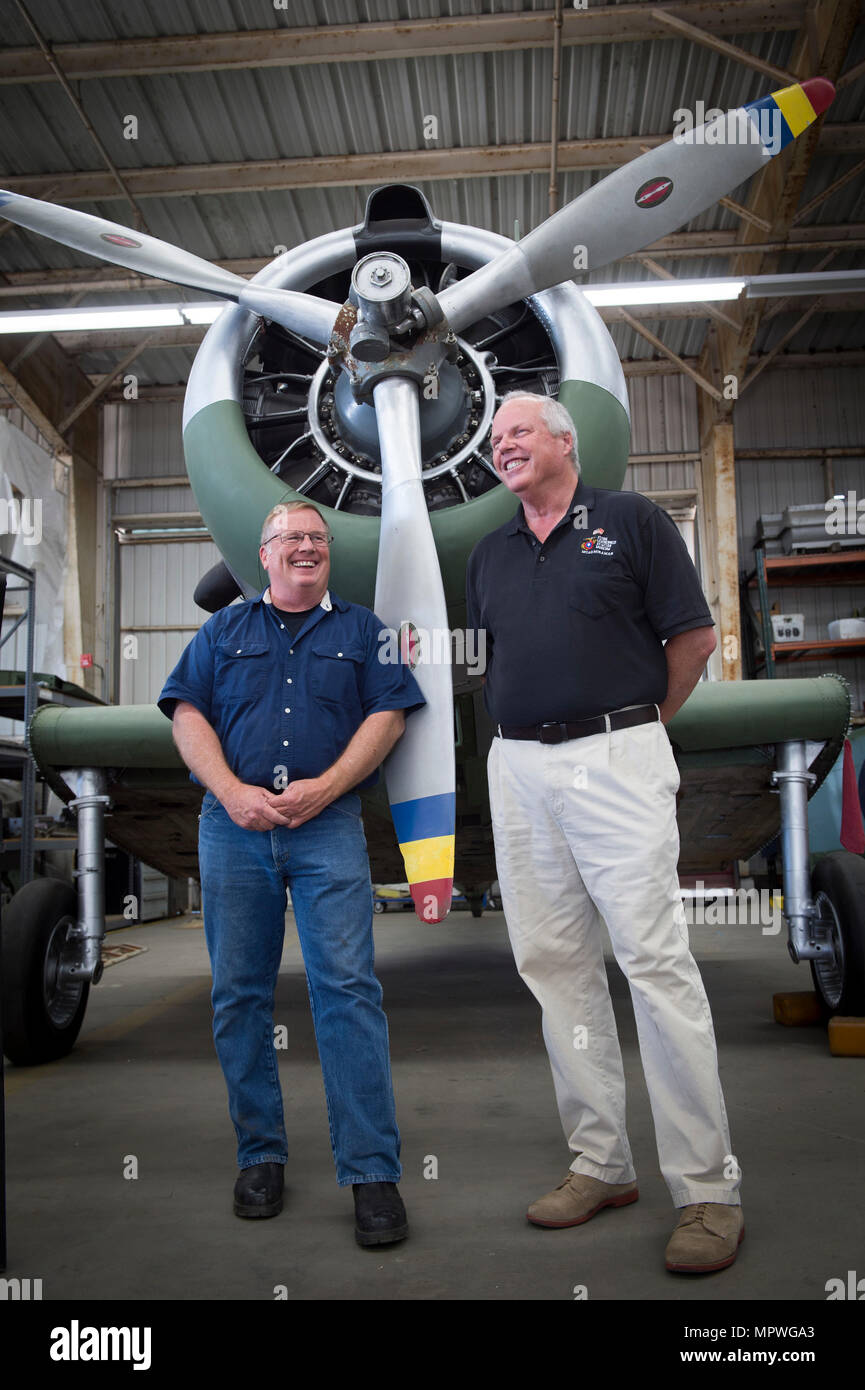Historic Aircraft Restoration Museum - Thursday 10 May 2019 The Flying Heritage and Combat Armor Museum (FHCAM) has revealed the paint scheme for its long awaited Me 262 project. The Me 262 was acquired by the museum in 2000 and so far its restoration has been very quiet! FHCAM is excited to reveal its nearly complete Me 262 to you for the first time.
This is an image of what the FHCAM plane looked like when it was captured. Like the museum's Fw 190D, the aircraft had a gray undercoat topped with two-tone "algae-like" green swirls. This is an unusual scheme. Like many aircraft in service at the end of World War II, the aircraft had some bare metal engine covers and others that appeared to be from another aircraft.
Historic Aircraft Restoration Museum

With the restoration of this aircraft almost complete, Flying Heritage plans to complete the first taxi test of the aircraft at the end of July. The aircraft will then be moved to Moses Lake where it will make its first flight later this year!
Smithsonian's National Air And Space Museum To Host Historic Warbird Display
The aircraft, vehicles and artefacts in the Museum of Flying Heritage and Battle Armor are rare treasures of military technology - a testament to the engineering prowess of the era and the spirit of humanity during the world conflicts of the 20th century. On a rotating basis, our working hangar houses military artifacts from the United States, Great Britain, Germany, the Soviet Union, and Japan, restored with unparalleled authenticity to be shared with the public. FHCAM is a 501(c)(3) organization committed to educating people about these rare historic aircraft and artifacts.
FHCAM's Me262 was built in early March 1945 at the Waldwerk Obertraubling factory near Regensburg. On March 14, 1945, Messerschmitt factory pilot Sergeant Otto Kaiser flew the aircraft for the first time from a flight test facility in Memmingen, Germany. The aircraft was then transferred to Eger, where it was converted into an unarmed reconnaissance version of the Me 262. The aircraft was found in A-1a/U3 configuration, meaning that the fighter had nose hardware different from the standard Me 262. . The 30 mm guns were replaced by a pair of R6-50/30 vertical cameras in the nose bay. These aircraft were unarmed and relied on speed and altitude to avoid engagement with Allied fighters.
US Army Air Disarmament Squadron (ADS) in May 1945. The German crosses on the sides of the aircraft were painted with American roundels and bars. The tail swastika was also painted on it. These aircraft were acquired by the United States as part of Operation Lusty; mission to gain access to enemy aircraft, technical and scientific reports, research facilities and weapons. the 17th
In May 1946, Colonel Watson flew the plane to Patterson Field for the start of this series of tests. It was flown to Patterson and Wright Fields for test work for 4 hours 40 minutes (8 flights), flying to Wright Field in August 1946. Flight testing was aborted after four engine changes were requested during testing. , ending with two single-engine landings. Around 1955 the plane (now in pretty rough shape) was acquired by Edward T. Maloney for his Planes of Fame Air Museum in Claremont, California. (The museum later moved to Ontario, California and then Chino, California) The aircraft remained in the museum's collection for several years, undergoing one or more restorations. On display, the aircraft is marked in a 'Nine White' color scheme, copied from another aircraft which was scrapped in a junkyard near Munich at the end of the war. In 2000, Flying Heritage acquired the Me 262. Its aviation restoration began in England and continued at several locations in the US. All work on the Jumo engines was done by Aero Turbine in Stockton, California. Final assembly of the aircraft takes place in Arlington, Washington. The engine assembly will be completed this week. The Aviation Museum of the Historic Aircraft Restoration Society has closed its doors to visitors for the foreseeable future due to the coronavirus pandemic.
The Aviation Museum Guide
HARS chairman Bob De La Hunty said the volunteer-run Albion Park Rail site was closed to the public at midday on Monday.
"We have tried to stay open with all the precautions... But when the prime minister made his call for curbs on Sunday night, we decided to support that call for curbs," he said.
"We have had to close our cafe under these rules and have taken the opportunity to protect our patrons and all our members, many of whom are in the vulnerable age group, and have decided to support the community's efforts to contain this virus."

Mr De La Hunty said they were also worried about the upcoming school holidays, a peak time for museum visitors.
Midway Museum Adds Historic Plane To Collection, Via Hollywood
"People pay to get into the museum. . . . It falls under the category of entertainment, so we're going to have to close it anyway."
Mr De La Hunty said basic maintenance and equipment servicing, based on civil aviation authority requirements, would continue to ensure the aircraft's engines were preserved.
"We are working to have a security and maintenance team in place to look after the aircraft... This will be done on a carefully controlled basis," he said.
Read more: Live coronavirus updates - Illawarra, Shoalhaven confirmed COVID-19 cases jump as parents plead to keep kids at home
Historic Aircraft Association
I am a member of ACM's national property team covering the Illawarra and South Coast. Based in Albion Park, NSW, I write about exciting, interesting or just plain quirky properties that have been listed for sale, major sales, market trends, auctions and much more. One of my favorite aspects of being a journalist is that I believe everyone has a story to tell. what is yours Apple HomePod Speaker 'Ted Lasso' Season 3 Netflix Founder Quits Stolen Social Security Numbers Tesla Self-Driving Video Duolingo Made Me a Toothbrush Monster Storage Year of the Rabbit
With many beautiful aircraft restored by on-site craftsmen and mechanics, the Yanks Air Museum makes for a fascinating visit.
Geoffrey Morrison is a writer/photographer for Forbes and the New York Times. He is also the editor of Wirecutter. He writes for Sound&Vision magazine, Home Theater and was editor-in-chief of Home Entertainment. He is NIST and ISF trained and has a degree in Television/Radio from Ithaca College. His bestseller, Undersea, and its sequel, Undersea Atrophia, are available in paperback and as an e-book on Amazon. He spends most of the year as a digital nomad, living and working while traveling the world. You can follow his travels at BaldNomad.com.

When I was a kid, three fighter jet models dominated the media. The iconic F-14 was immortalized in Top Gun. Then there's the Iron Eagle and its F-16. His three (!) series were stored in that "Blockbuster at 9:30 Friday night pick something or we're late." And as for the F-15, I hope anyone who wants one can have a Starscream … or at least a Leader-1.
Visit Historical Aircraft Restoration Society Museum In Albion Park Rail
Today, the F-14 is retired, but the F-15 and -16 are still very much in service. Although many museums have some or even all of these aircraft in their collections, it is rare to see them side by side. The Toys of My Youth, Full Size.
Check out the Yankee Aviation Museum in Chino, California. Includes a full restoration shop that restores and restores classic aircraft. Many of the floors in the museum have been restored in situ. Even more amazingly, most of these planes are still flying. Here's a look around.
I've seen F-16s in other museums before, but their two contemporaries highlight their diminutive size in sharp relief. To give you a rough idea, the F-16 is like a compact car that sits next to the Mack-truck-style F-15 and the even larger F-14.
Before you get to the jets, though, there's the Legends Hanger, where propeller-driven aircraft from the dawn of flight to World War II are in beautifully restored form. In another rare combination, there is also an early P-51 Mustang next to a late model P-51 Mustang. It is amazing to see how quickly design progressed during the war. After you've had your fill of medium-sized biplanes, gyrocopters and bombers, head over to the Starfighter Hanger, featuring a myriad of jet aircraft from the end of World War II to the modern era. There are quite a few more World War II aircraft here, including an SBD Dauntless, a P-40, and even a Wildcat built by General Motors.
File:shavrov Sh 2 Display.jpg
I will then proceed to the recovery hangar. Half a dozen restorers are hard at work on several World War II-era aircraft. It's a slow process; the restored P-39 took nine years to complete. Finding parts is always a challenge, as you would expect. Many of the aircraft they restore here go beyond beautiful museum pieces. They have been rebuilt all the way to be back on the air.
In the back is another gem of this museum: an ossuary. The partially completed plane sits in the sun waiting to be restored to its former glory. This is one of the few clades that you can walk through unsupervised. We did a whole separate story on him and he took a lot of pictures.
Chino is not far from Los

Historic brick restoration, historic home restoration contractors, historic aircraft restoration society, historic home restoration companies, historic home restoration, aircraft restoration museum, historic roof restoration, historic aircraft restoration project, historic restoration contractors, historic restoration companies, historical aircraft restoration museum, historic masonry restoration